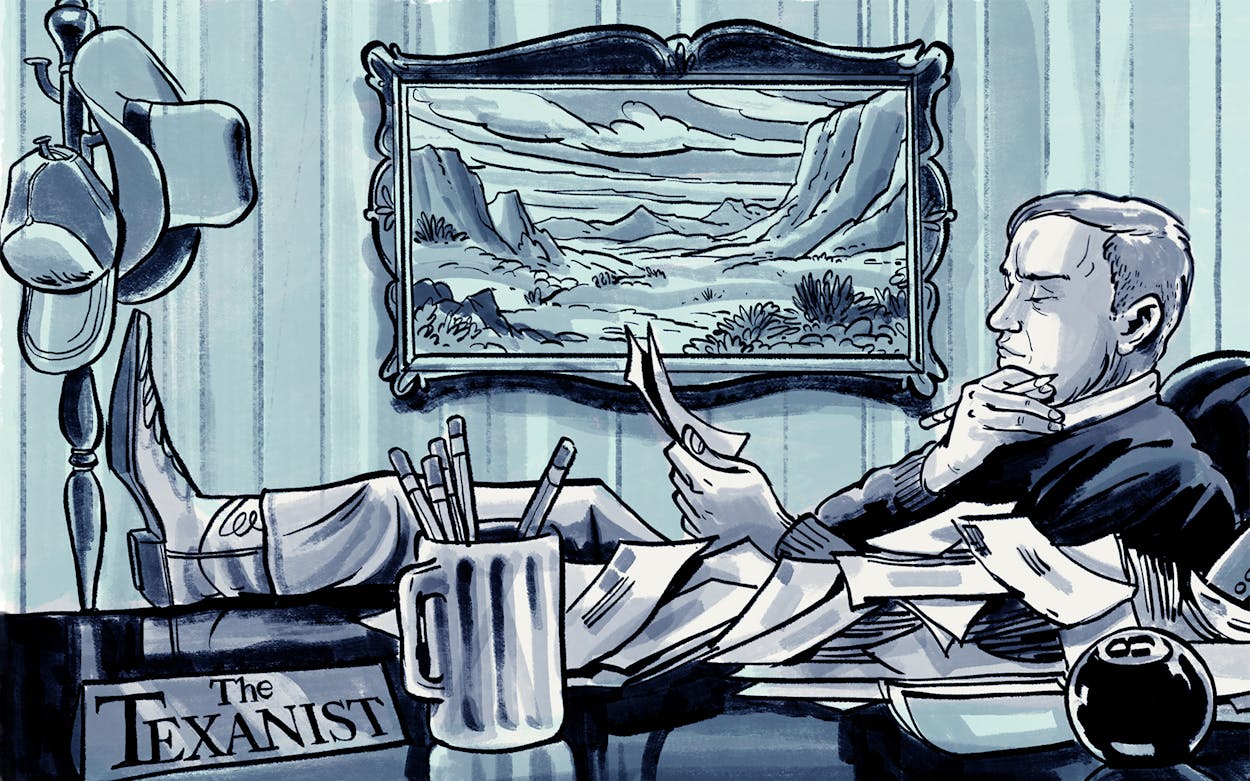Q: While visiting friends in Franklin, Tennessee, I stumbled into a very nice bookstore. Upon learning I was a native Texan, the proprietor instigated a friendly conversation regarding the many connections between our two states. He even mentioned that Sam Houston and Davy Crockett each had set foot in the building we were in. I had to tap the brakes on the chat, however, when he announced, “You know, we gave you your star.” “Pardon me?” I responded, before he explained that—according to him— the Tennessee flag once contained four stars, and the reason the current iteration only has three stars is because they “gave” Texas a star after we won our independence. I politely informed him that I had never heard such a story, thanked him for the conversation and the aid of his ancestral Volunteers to my home state, then made my purchases and moved on. Can you verify this gentleman’s claim of a gifted star?
Jeff Jordan, Kaufman
A: Tennessee’s contributions to early Texas are undisputed. Indeed, a good number of our founding heroes hailed from that fine state. Among them were, of course, George Childress, who is credited with authoring the Texas Declaration of Independence, and eight of his fellow Tennesseans, who accounted for a significant fraction of the document’s 59 signatories. Many other Volunteers paid the ultimate price in the course of birthing the Republic. For all that such men—Alamo defender and famous Tennessean Davy Crockett foremost among them—contributed to the cause, Texas will forever owe a debt of gratitude to Tennessee.
One thing, however, that Texas need not thank Tennessee for is the Lone Star that graces the beautiful blue field of our state (née national) flag. The story told to you by that Franklin bookshop owner is such a load of vexillological bull dung that the Texanist doesn’t know where to begin. It is true that the historical record as it relates to the origins of the Lone Star flag is incomplete—nobody knows for certain from whence the design came. There is a long-disputed claim that credit is due to South Carolinian Charles B. Stewart, a delegate to the Convention of 1836 at Washington-on-the-Brazos, where the Declaration of Texas Independence was signed. There is a less disputed assertion that the design belongs to Austin artist Peter Krag, who was paid $200 for drawings of the official flag and official seal. The actual facts, though, remain a mystery.
What is known for certain is that a Washington-on-the-Brazos committee was tasked with coming up with a flag for the newly formed Republic and that it met and discussed numerous options, none of which were the Lone Star flag as we know it today. What is further known for certain is that the current flag was made the official banner of the Republic of Texas in 1839 and the official state flag when Texas joined the union in 1845.
The Texanist reached out to a respected flag expert for a backup of his call of total BS on this story but never heard back, which isn’t at all surprising. Only a fool would waste his precious time parsing such a ridiculous tale. But had the expert gotten back to him, he would have likely flagged (rimshot) a few of the glaring flaws in this fella’s far-fetched account. The first of which would probably have been the fact that Tennessee’s flag’s three stars represent the state’s three “grand divisions,” its three distinct geographic regions—West, East, and Middle. There is not a fourth geographic division in Tennessee, grand or otherwise (“The Tennessee Whiskey Trail” doesn’t count, although maybe it should), and therefore there would never have been a spare fourth star on its flag to give. Second, Tennessee’s official tri-starred banner wasn’t adopted until 1905, some 66 years after Texas’s Lone Star was first officially unfurled. The flag that preceded Tennessee’s current flag had no stars and was only instituted in 1897. In fact, the Texanist can find no evidence that Tennessee had an official flag of any sort when the Texas flag debuted. In short, the bookshop owner’s story doesn’t add up. Literally.
But this story constitutes such a giant whopper that the Texanist is skeptical that the amiable bookshop owner was simply passing along erroneous information that he himself has believed to be true since he first learned it back in grade school. No, it is the Texanist’s professional opinion that you were quite intentionally told a Tennessee tall tale by a four-star fabulist.
Interestingly, Davy Crockett, in addition to being a Tennessean and hero of the Texas Revolution, was also known as a top-notch raconteur. In fact, a lot of people don’t know this, but the Texanist once heard that Crockett’s Texian compatriots even dubbed him “Davy ‘The Tennessee Raccoonteur’ Crockett, King of the Wild Tall Tale.” Perhaps one thing that Texas can thank Tennessee for is a shared passion for yarn-spinning. Well, maybe.
Have a question for the Texanist? He’s always available here. Be sure to tell him where you’re from.
- More About:
- The Texanist
- Davy Crockett








